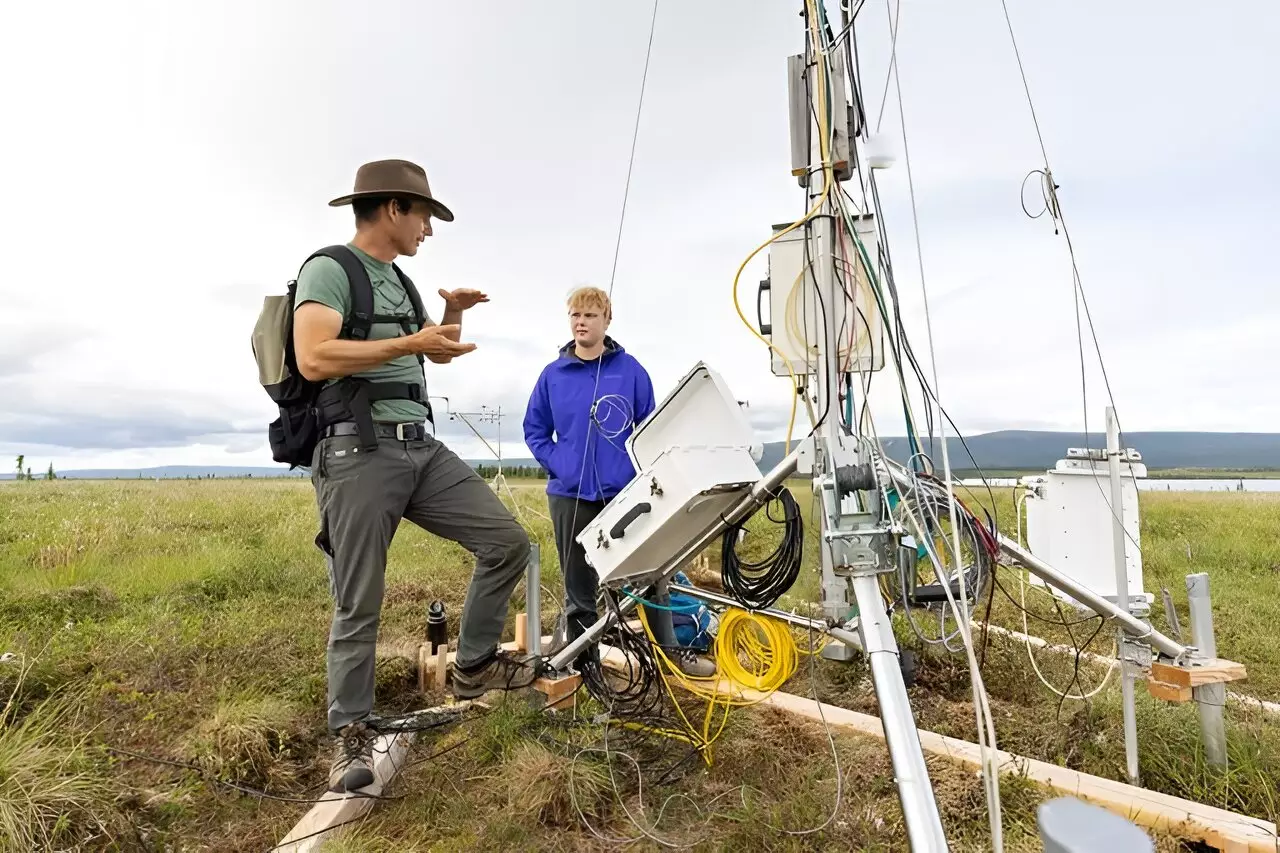The Arctic tundra, a mesmerizing but fragile landscape, holds secrets that have global implications. Led by Ted Schuur, a distinguished Regents’ professor from Northern Arizona University, recent research conducted by the Permafrost Carbon Network delves into the alarming biological processes occurring in this vital but rapidly warming region. The Arctic, particularly the permafrost areas, is not just a cold terrain; it is a critical reservoir of organic carbon that influences Earth’s entire climate system. It is estimated that despite occupying only 15% of Earth’s soil area, this region sequesters approximately one-third of the world’s soil organic carbon. This article aims to dissect the significance of this phenomenon and the urgent need to address the potential fallout as climate change escalates.
Understanding Carbon Dynamics in the Tundra
To comprehend the challenges presented by a warming Arctic, we must first grasp the carbon cycle at play. Carbon transitions through ecosystems via two main processes: photosynthesis, which pulls carbon from the atmosphere, and ecosystem respiration, which releases it back. In healthy ecosystems, this cycle is balanced; however, the rapid warming of the Arctic—even at rates significantly higher than global averages—is altering this balance dramatically. The warming leads to enhanced ecosystem respiration, resulting in a concerning release of carbon dioxide and methane, potent greenhouse gases that exacerbate climate change.
It is estimated that emissions from permafrost could contribute an additional 10% to 20% of global warming by 2100, equating the impact to that of a major industrial nation. This scenario poses a critical challenge, as the emissions projected from these areas have been largely overlooked in international climate agreements, such as the Paris Agreement. There is a glaring gap between our environmental targets and the actual dynamics of carbon release from permafrost.
A Closer Look at Research Findings
Recent studies have produced disquieting revelations about carbon dynamics within these vulnerable ecosystems. One study published in *Nature Climate Change* examined over 70 sites and revealed troubling trends: while non-permafrost ecosystems can increase carbon storage during summer growth, the permafrost areas are releasing carbon in the fall and winter, outweighing summer uptake. This finding highlights the stark difference in carbon behavior between these ecosystems, indicating that warming temperatures could unleash massive quantities of carbon, substantially increasing total atmospheric carbon levels.
On another front, researchers employed miniature greenhouses at various tundra sites to simulate future warming scenarios. The results were alarming: a mere increase of 1.4°C in air temperature led to a 30% rise in ecosystem respiration. This data confirms what many climate scientists fear—the Arctic’s unique ecosystems may not sustain their carbon-storing capabilities as temperatures rise, becoming instead a significant source of greenhouse gases.
Influence of Local Conditions
In addition to the overarching concern of temperature rise, local environmental factors such as water and nutrient availability also play a pivotal role in determining carbon dynamics in permafrost. Variability in these conditions can lead to inconsistent carbon uptake and respiration across different sites. This complexity necessitates a nuanced approach in collecting data and interpreting results, ensuring that regional variations do not skew our understanding of the global implications.
The interconnectedness of ecosystems means that changes in one region can have cascading effects on others. For instance, as the Arctic region continues to heat up, it not only influences local biodiversity and ecosystems but also global climate patterns and weather systems.
New Challenges in Research and Data Collection
Ongoing research efforts face significant challenges, particularly in light of unforeseen geopolitical tensions, such as the invasion of Ukraine, which has restricted data access to critical permafrost monitoring sites. The loss of sites in Russia, which contribute significantly to understanding Arctic carbon dynamics, poses a severe setback to global research efforts.
The existing network provided a comprehensive overview of the landscape variability within the permafrost region, and losing nearly 28% of data points exacerbates the already pressing issue of understanding the full extent of carbon release. Although the research community is working to establish new sites in North America, the unique characteristics of Russian ecosystems present a gap that is difficult to fill.
Such circumstances compel us to rethink global collaboration in climate research, emphasizing the immediate need for international cooperation to bolster data collection and management.
There is an urgent need to not only tackle the emissions gap posed by emerging permafrost carbon releases but also to enhance our scientific capabilities and collaborations to mitigate future climate crises effectively. Every passing day in the Arctic tundra serves as a stark reminder of the reality we face as we confront one of the most pressing global challenges of our time.

